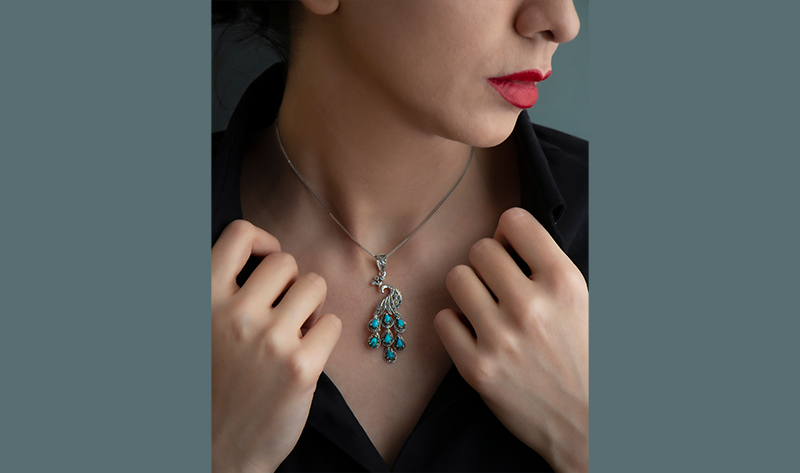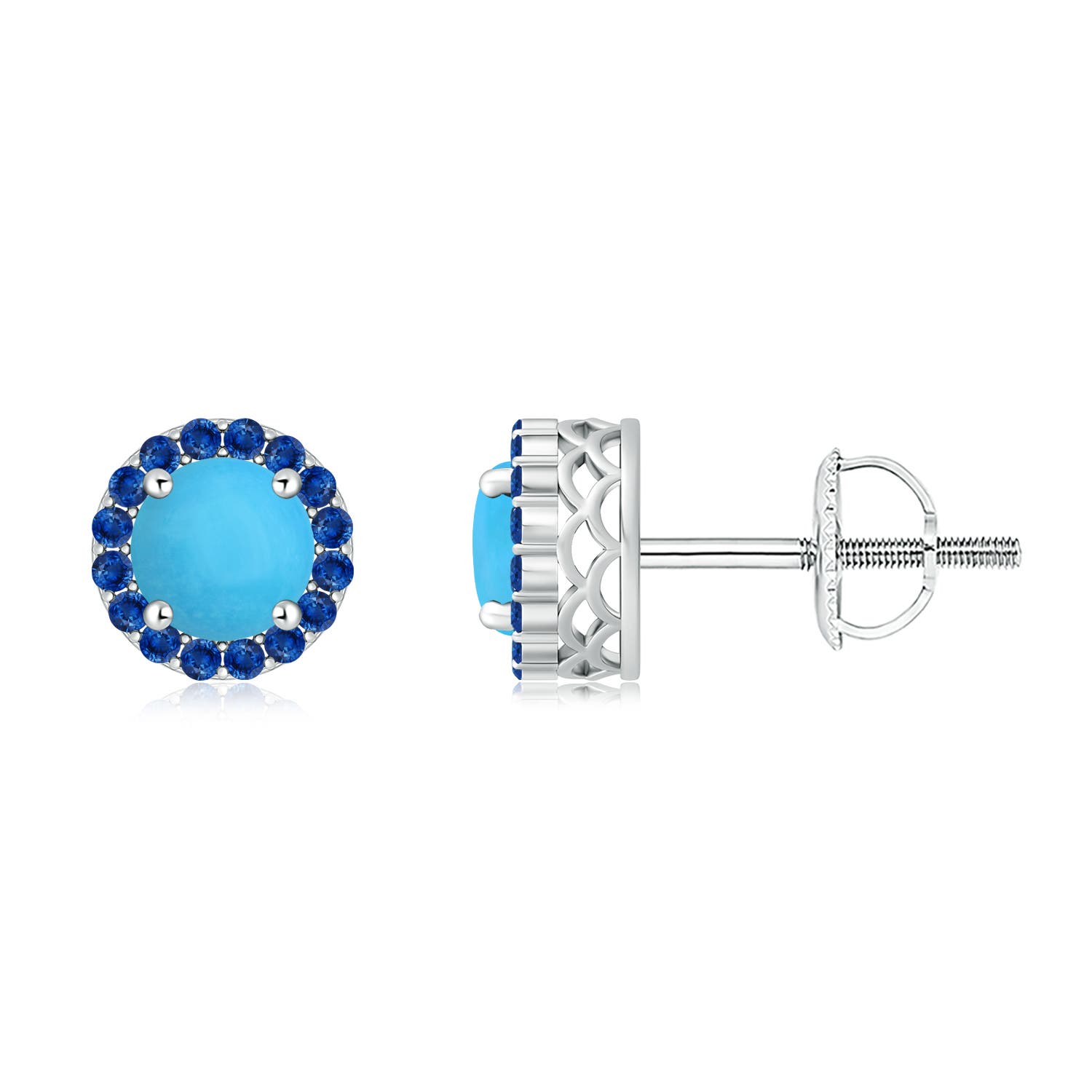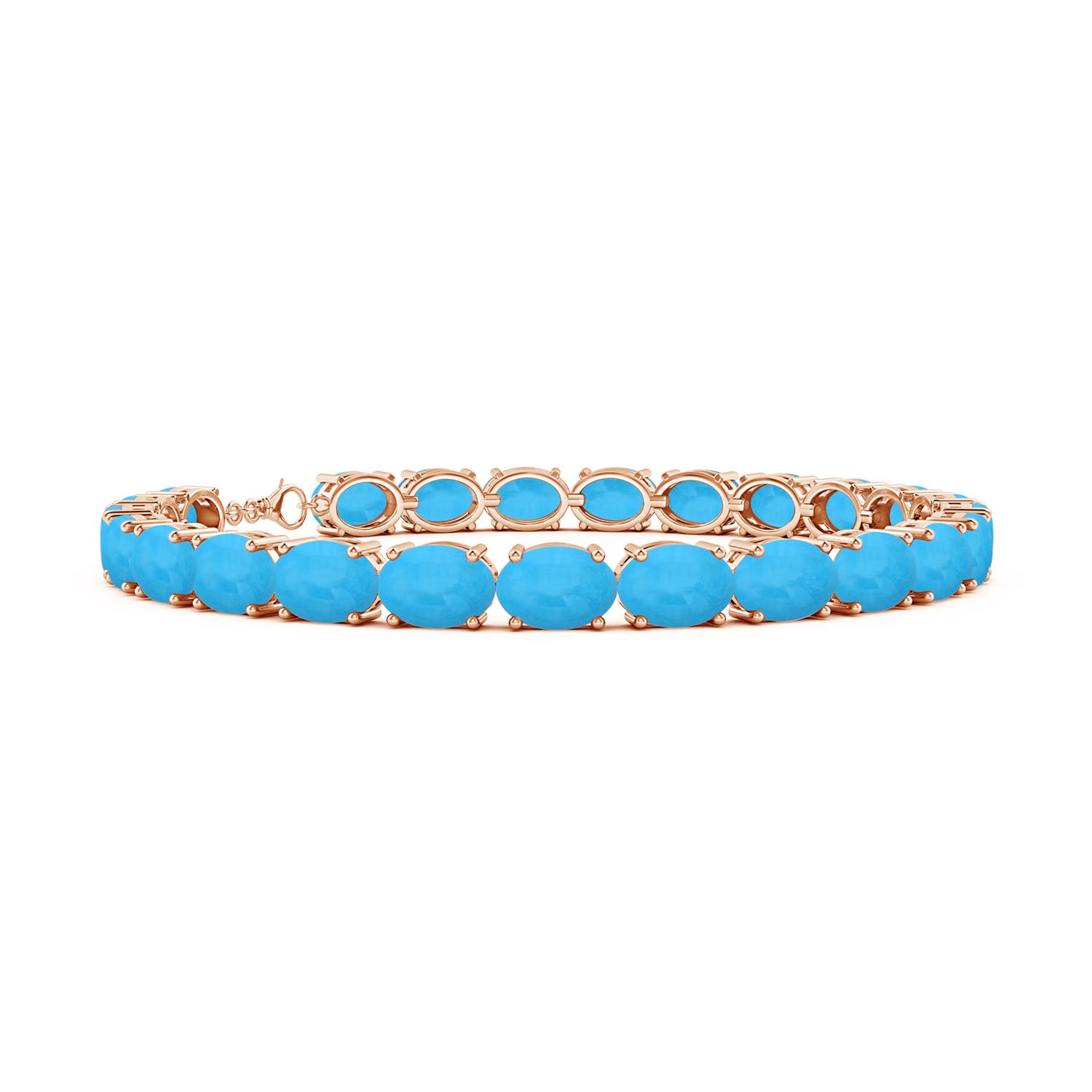Turquoise is a gorgeous, blue-to-green gemstone made of hydrated aluminium and copper phosphate. Because of its distinctive sky-blue tint, this crystal is expensive and has been valued as a decorative stone and gemstone for thousands of years.
Wish to cleanse your life of evil and negative energies? Turquoise gemstone is the one for you! Because of its astrological advantages and chic status in the world of gemstones, it has enjoyed a definite place in the world of artisans and jewellers the world over. This fascinating gemstone is worn to shield one from harm, aggression, accidents, and betrayal. It also assists in balancing the planets. If you are interested in what the turquoise gemstone is made up of and want to know about the different types of turquoise available, then keep on reading.
Different Uses of a Turquoise Gemstone
Wearing Turquoise
The turquoise gemstone can be worn as a pendant, set in gold, silver, white gold, or even as a ring. The beautiful deep blue-green hue of the turquoise gem complements an array of outfits and it also pairs well with other coloured gemstones and metal settings. Whether you have a sophisticated style or one that comprises bold, chunky accessories, a turquoise-studded piece of jewellery will fit right in and look gorgeous.
At Home
Placing turquoise in your home can help you overcome your financial struggles and absorb the negativity and imbalance in your life. You may start to become more productive as a result of this, which might balance your energy. To purify the energies of your room, you can place turquoise gemstones near the window or on your vanity. To induce happy dreams and a restful night’s sleep, some individuals like to place the stone under their pillows each night, which helps in preventing nightmares and excessive emotional intensity when dreaming.
Also Read: Can Turquoise Be Worn Every Day?
At Work
Turquoise is a common decorative item in feng shui because it represents the water element. In addition to enhancing one’s health, it is utilised as a remedy for attracting prosperity and money. Moreover, it’s a fantastic choice for a home office because of its relaxing and upbeat spirit.
If you are seeking financial gain and opportunities, it is advised that you place the stone near your laptop or daily planner. Turquoise may also be combined with other gems like Catrine and earthy components for harmonious energy that enhances riches. Wearing a turquoise ring or pendant is a great option while heading out to an important business meeting, as it is believed to make things come to fruition.
Different Types of Turquoise
Turquoise ranges from different shades of blue to shades of green. Some have a matrix; others do not. Even the matrix differs significantly in colour and pattern. To help you identify them better, let’s go over a few different types of turquoise available.
1. Natural Turquoise
Natural turquoise stones are extracted in their natural state from the mine, after which they are shaped, polished, and crafted into different jewellery pieces. They are often of gem grade and don’t have any additions or treatments. Less than 3% of the turquoise in the market is natural turquoise. As the loose stone absorbs the wearer’s skin oils, the natural turquoise colour matures and becomes richer with time.
2. Stabilized Turquoise
Natural turquoise that lacks shine or brightness is stabilized turquoise. The stone is treated or stabilized by the injection of a colourless epoxy resin and is sometimes referred to as soft or chalk turquoise in its natural state. The compressed glue fills the pores in the naturally transparent turquoise stone, making it rock-hard.
3. Treated Turquoise
As with treated turquoise, it starts as soft or chalk turquoise but is then treated with coloured epoxy resin to give it colour. This method produces vibrant colours, although they have an artificial appearance. Stones created using this method are occasionally referred to as colour-treated or colour-stabilized.
4. Reconstituted Turquoise
Low-grade chalk turquoise that has been crushed into a powder, combined with epoxy and colours is used to make reconstituted turquoise. They resemble natural turquoise.
Benefits
Turquoise has been popular for ages for a good reason. This powerful gem is renowned for many healings in all aspects—body, mind, and spirit. Here are some of the most famous turquoise benefits that you can make a note of.
1. Physical Healing
- Turquoise is one of the greatest stones for physical body strengthening. As a result, it is an excellent gemstone for fatigue, panic attacks, and melancholy. In addition, it can boost your spiritual and physical immune system, reducing viral infections and pollutants in the body.
- This stone also promotes nutritional absorption while eliminating harmful waste and toxins from the body. Turquoise as a gemstone is also well-known for its anti-inflammatory properties, aiding in the elimination of excess acidity and helping backache, diabetes, and stomach-related problems.
- Wearing a turquoise necklace can even help prevent excessive coughing and other respiratory problems. Turquoise can also aid in treating speech issues such as stammering.
2. Emotional Healing
Turquoise, with its gorgeous soothing tints, is an effective mental healer, bringing consolation to your spirit and inspiring physical well-being. Creating a sense of calm and tranquility can promote a pleasant overall attitude and emotion. Wearing or touching turquoise can also assist in replenishing lost vitality and elevating your mood and thoughts. It can ease the tension by returning your attention to the centre of your heart.
Also Read: Does Turquoise Chip Easily?
3. Spiritual Healing
The turquoise gemstone is known to facilitate communication with the angels and spirits around and directs the energy of the heavens to the ground. It improves dormant psychic talents, strengthens intuition, and gives knowledge and insights. It also facilitates contact between the material and spiritual worlds. It is typically used in rituals for emotional and spiritual release and when applied to the throat, it negates the influence of negative vibrations and energies.
Things to Remember While Buying a Turquoise Gemstone
Due to its striking colour and appeal, the turquoise gemstone is widely used in all sorts of jewellery and accessories. From statement necklaces and rings to beautiful drop earrings set in gold, silver, and platinum, there are endless options to choose from. However, if you are interested in turquoise-studded jewellery, it is best to understand the 4cs, which can help you pick the best kind there is. Below, we have mentioned the 4cs in detail to give you a better understanding.
1. Colour
The most valuable shade of turquoise is an even, vivid, medium blue. However, many jewellery enthusiasts like and prefer a greenish-blue colour, while some contemporary designers purposely use avocado and lime green turquoise to make a bold statement. Blue hues that are completely saturated are often the most valuable.
2. Clarity
The transparency of turquoise ranges from semi-transparent to opaque. Only a small number of specimens might include structural lines. Fine structural seams in spiderweb turquoise provide attractive web-like patterns. A translucent turquoise is quite rare.
Also Read: How Is the Turquoise Formed?
3. Cut
Since turquoise has a naturally exquisite appearance, the cut is not a critical factor in the gemstone’s allure. Depending on the design of the jewellery, turquoise is frequently utilised in faceted or rough shapes. Turquoise may also be cut into silicone molds. Every grid is well shown by the structure’s form, enhancing the turquoise’s colour and texture. Turquoise is also styled into fine, flat bits frequently used in jewellery inlays and beads for necklaces.
4. Carat Weight
Although turquoise comes in various sizes, large chunks free of the structure are rare. The average cost of a turquoise gemstone ranges between $1 to $10 per carat, and can also be between $0.05 carat to $1000 a carat, depending on the quality.
Caring for Turquoise Jewellery
Following are some tips on how to take care of turquoise bracelets and other jewels made of this gemstone. Natural turquoise may absorb substances like household cleaners, colognes, or metal polish, which could alter its hue. Before bathing and using any skin care product, take off any turquoise jewellery you may be wearing to keep it from getting tarnished or lacklustre.
Turquoise jewellery should only be worn on occasion due to the unusual characteristics of this stone. If wearing this stone in a ring, ensure that it has a solid setting that can shield the gemstone from physical harm, chemicals, and shocks. Washing methods like steam cleaning and ultrasonic cleaning should not be used. The best and most effective approach is to use soap, detergents, or cleaning agents to wash this fragile gemstone.
Also Read: Is Turquoise a Durable Gemstone?
Turquoise Cleaning Techniques
Following are some of the techniques on how to clean turquoise bracelets or jewellery. When exposed to water or chemicals, almost all gemstones exhibit the same property. Warm or soapy water can be used to wash it safely but ultrasonic or steam cleaners should never be used, as a treated turquoise might get damaged by heat. Using soft, damp cotton is one technique to clean it. You might moisten the cloth with water after adding some soap to it. Directly pouring soap over the gemstone will damage the stone as well, so avoid this at all costs. A clean, soft cloth can also be used to wipe the stone.
Wearing Turquoise Rings
Women’s turquoise rings go with just about any ensemble! If you love wearing all-black, a turquoise ring can add the necessary pop of colour with its vibrant blue-green hues.
Additionally, turquoise rings pair well with many types of jewellery, and the colours of the gemstone complement other precious stones like pearls, emeralds, moonstones, and diamonds.
Also Read: Is Turquoise a Rare Gem?
Conclusion
The turquoise gemstone is a part of the green gemstones list and is a coveted gemstone across the world. Also considered as the birthstone for December, this lovely gem is not only beautiful and versatile in the form of jewellery, but comes with tons of astrological, emotional, spiritual, and physical benefits for the wearer. From getting rid of bad luck and evil energies to fostering a sense of love and balance in relationships, this gemstone has many healing qualities which makes it one of a kind. If you wish to cure problems related to alcoholism, depression, or anxiety, then pick a turquoise ring for yourself and welcome new and positive vibrations into your life.
FAQ
Angara offers a wide collection of stunning turquoise rings, earrings, pendants, and bracelets and uses the highest quality turquoise. These jewelry pieces come in a range of designs. From vintage and antique to contemporary, chic, and nature-inspired, you will find it all on the Angara website.
Turquoise found naturally is widely utilized to create jewelry without any additional treatment. So, it should be no surprise that this variety of turquoise is the most sought-after.
































